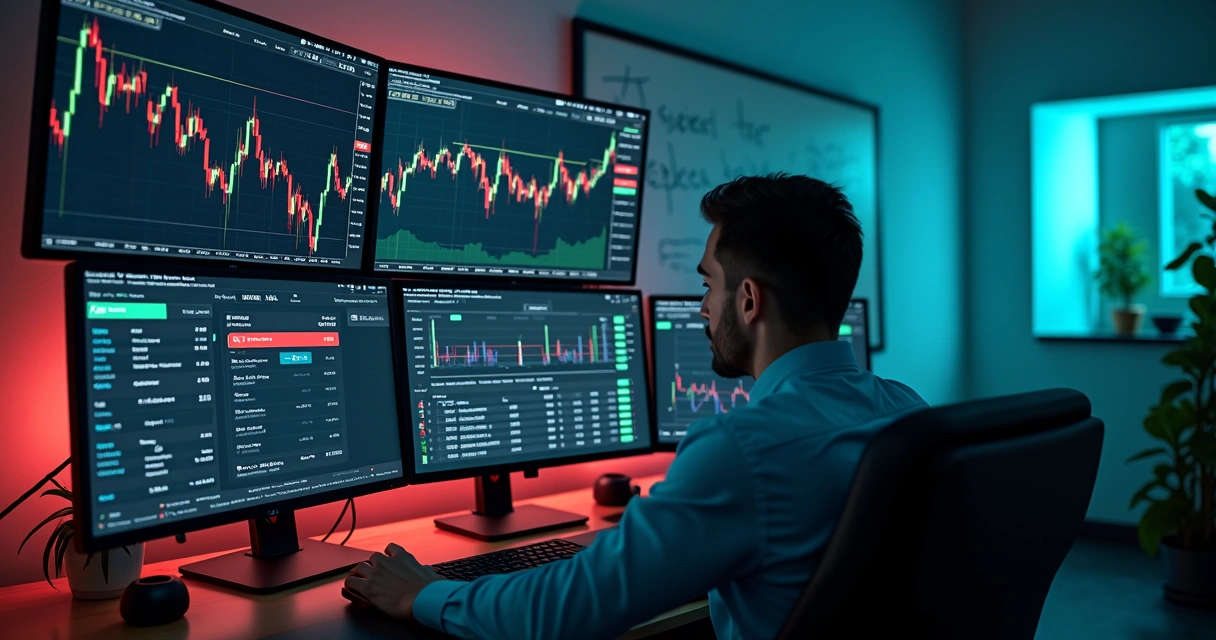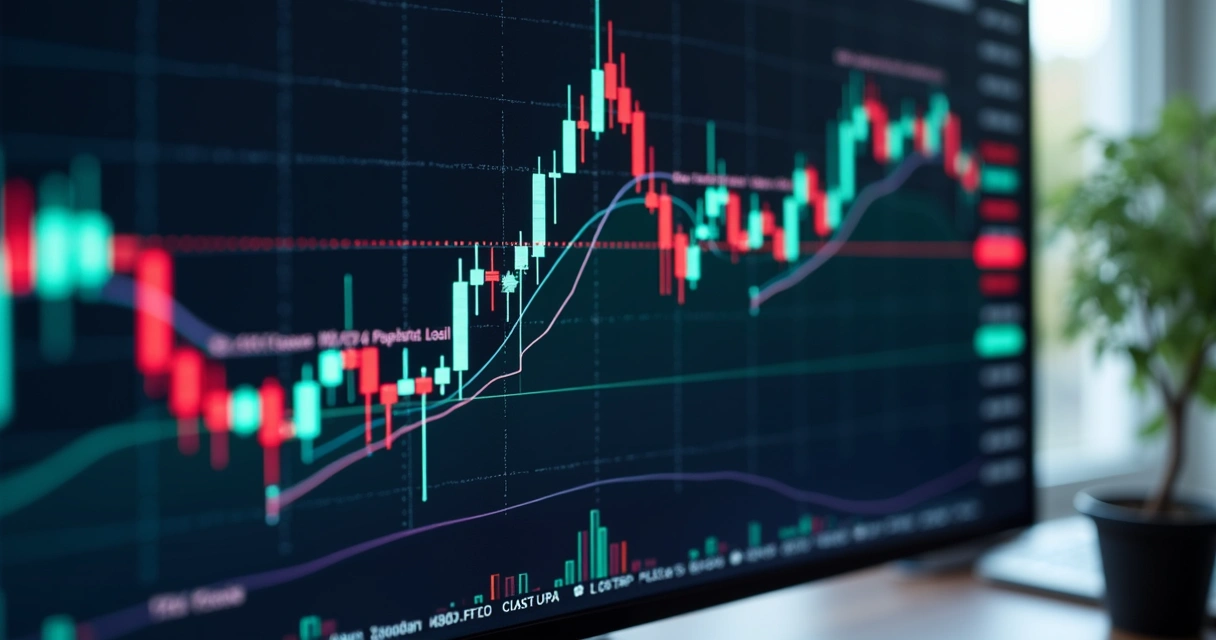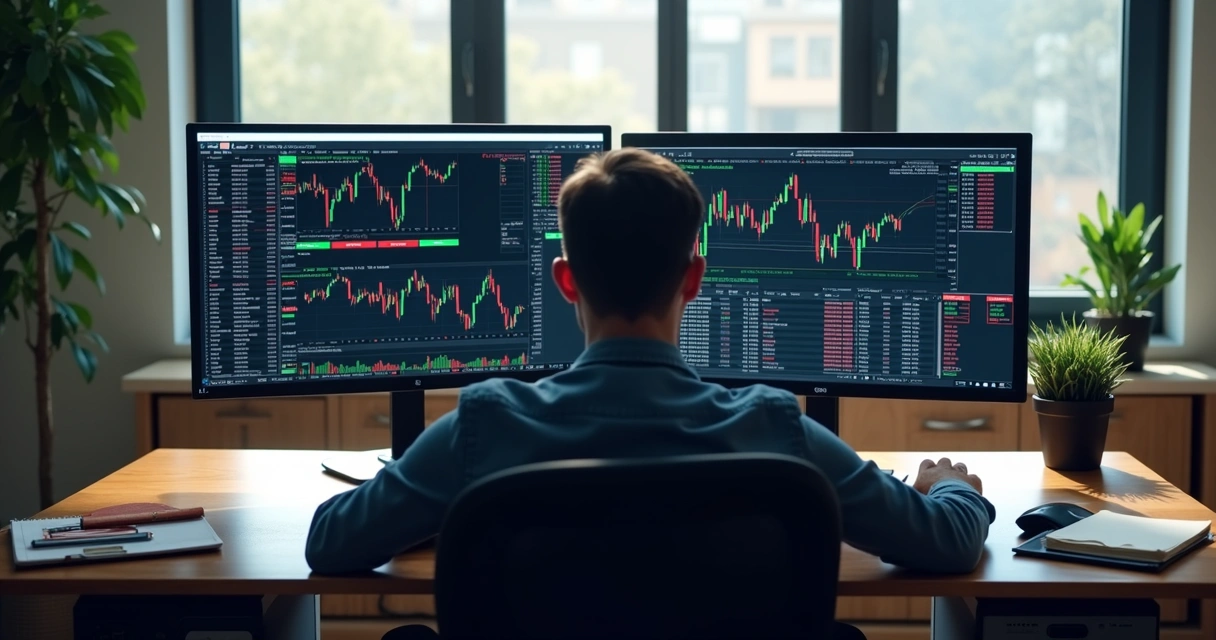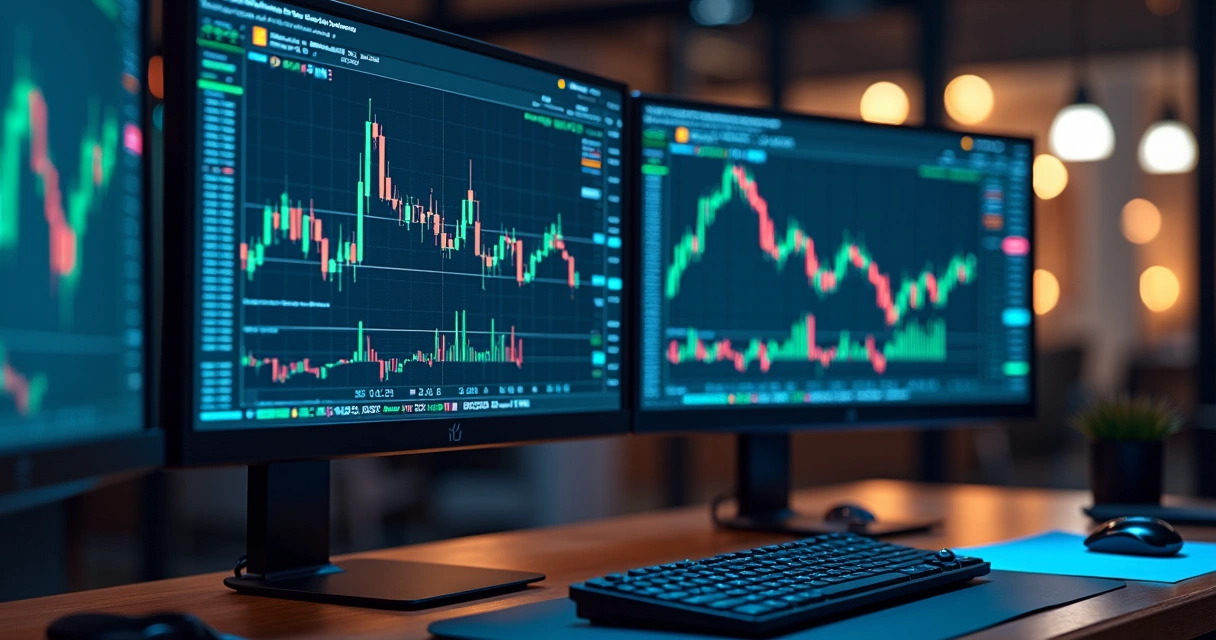Financial markets have a way of surprising everyone, even those who believe they have seen it all. Sometimes, price movements follow the technical textbook. Other times, they defy logic or expectation, leaving even the most experienced traders searching for answers. But one thing remains consistent in every market: the risk of losing capital. That is why anyone serious about trading, whether as a hobby or profession, must learn to protect themselves with smart protective measures. Perhaps the single best-known—and possibly most misunderstood—tool for this job is the stop loss.
Introducing the stop loss order
A stop loss is an order placed with a broker to buy or sell once a certain price is reached, primarily to limit potential losses on a position. It acts as a safety net, an automatic trigger that closes a trade if the market moves too far in an unfavourable direction. This tool is so integral to risk control that no professional approach, like those taught at Institutional Trading Academy, leaves it out of a trading plan.
Discipline in risk management often separates long-term winners from short-term gamblers.
For instance, imagine a trader buying 100 shares of a stock at $50. The trader wants to limit any loss to $5 per share. Instead of watching the screen every second, the trader places a sell stop at $45. If the price drops, the order triggers, and loss is contained. If the price rises, the order remains dormant—no harm done.
 Of course, it is never just about where to place a stop—how and why matter, too. In advanced programs, such as those offered at Institutional Trading Academy. The reasoning behind each trade and its risk controls are emphasized. Including how stop orders interact with volatile or quiet markets.
Of course, it is never just about where to place a stop—how and why matter, too. In advanced programs, such as those offered at Institutional Trading Academy. The reasoning behind each trade and its risk controls are emphasized. Including how stop orders interact with volatile or quiet markets.
Why professional traders rely on stop loss orders
Markets can become turbulent. News breaks, liquidity dries up, or algorithms push prices past comfort zones in seconds. Protective orders exist to ensure that a single trade never erases days, weeks, or even months of hard work. For professional traders, this is not a suggestion; it is a habit.
- Volatile markets: A quick flash crash needs instant action—a protective order does that automatically.
- Trading while away: Absent traders risk huge losses if prices fall sharply and they cannot react. Automated orders solve this.
- Defense against emotion: In the heat of trading, it is easy to make illogical decisions. Automated exits enforce discipline, even when emotions try to interfere.
Studies from regulatory findings on stop orders show that using these tools is not just about preventing big losses—it’s about upholding market fairness and transparency. Considering how vital risk control is in funded account environments, such as those at Institutional Trading Academy, stop-based risk systems are woven directly into funded and simulated trading environments.
How a stop loss works: The basics
A stop loss order works by setting a price at which a security should be bought (for a short position) or sold (for a long position) if the market price moves against the trader. This action is designed to curb loss, but it is also used to lock in profits in a winning trade—a trailing version, for example, moves as the market price increases in the trader’s favor.
Automatic protection never gets tired or emotional.
There are two main ways to implement such a protective order:
- Fixed price level: Set at a specific figure, e.g., $45 for a position started at $50.
- Trailing stop: Moves up as the asset rises, always staying a set distance below the highest price reached.
For more details on the mechanics and regulation of these order types, investor.gov educational resources on stop orders explain the nuances for every trader level.
Real examples: Setting appropriate stop loss levels
The process of deciding where to set a stop is neither art nor science alone—it combines both, depending on strategy and context. Here are three distinct situations:
- Technical stop: Suppose a day trader enters a long position on EUR/USD after a breakout at 1.1200. If the last swing low is at 1.1175, a protection order just below that at 1.1170 could make sense, as a price drop to this level may indicate that the setup has failed.
- Volatility-adjusted stop: If a stock usually fluctuates $2 per day, but today it has gone up $10, a more adaptive approach would be to calculate an exit based on a multiple of average daily range—perhaps 1.5 or 2 times that range below entry, so as not to get stopped out by “normal” market noise.
- Capital-based stop: Some traders, especially when dealing with funded or simulated accounts at places like Institutional Trading Academy, set their allowed loss per trade to a strict dollar or percentage amount of total capital. For example, risking 1% per trade on a $10,000 account translates to closing out a position if a loss hits $100.
No plan survives first contact with the market—so let the rules do the heavy lifting.
Stop loss vs. limit orders: Know the difference
Traders sometimes confuse protective stops and limit orders. They may even overlap in practice, but understanding the difference is essential for using each in the right place.
- Stop loss: Triggers a market order to exit a trade if a set price is reached, regardless of the current market price. The priority is getting out, even if the exit price is slightly worse during extreme volatility.
- Limit order: Sets a maximum or minimum price for buying or selling. However, a sale or purchase only occurs if the market price hits or betters the stated limit. There is no guarantee the order will ever fill if price skips past it.
SEC’s special study on the display of customer limit orders shows how publicly displayed limit orders add to price transparency and liquidity. Yet, in fast-moving markets, a protective stop may be more reliable for risk management, since it executes regardless of whether it captures the exact price.
Sometimes, traders use a stop-limit order—a combination. Here, a limit order replaces the market order once the stop is triggered. The benefit? Extra price control. The risk? If the price moves too quickly, the limit order may not fill, exposing traders to additional slippage, which is discussed in SEC data on order cancellations and executions.
Why risk management starts with protection orders
It is easy to get swept up in predictions about where the market is headed, but real risk management is about confronting what can go wrong. A well-placed stop provides guardrails, so even when things go off course, damage is limited.
- Ensures losing trades do not outweigh winning ones
- Protects against emotional decision-making and analysis paralysis
- Prevents catastrophic drawdowns in both real and funded accounts
In fact, many educational sources, such as Institutional Trading Academy’s blog, focus on the psychological benefit: knowing there is an exit plan in place helps traders think more clearly and stick to their system.
How to calculate stop loss placement in a trading plan
Placing protective orders can either be a quick decision or a calculated step. Here is a simple framework, suitable for both new and advanced traders, as echoed in many courses at the Academy:
- Assess account risk: Decide what percentage of total capital to risk per trade. Many professionals risk between 0.5% and 2% per trade.
- Measure price risk: Based on your analysis, determine how far away from entry price your order should be set—whether from technical levels, volatility bands, or a fixed dollar amount.
- Calculate position size: Divide the dollar risk by the difference between entry and stop price to get the number of units, shares, or contracts to trade. For example, risking $100 with a $2 stop means you can trade 50 shares.
- Implement the order: Place the stop as soon as the trade is opened; do not delay or rely on memory or “gut feeling.”
Known risk is manageable. Unknown risk is dangerous.
 Position sizing and psychological discipline
Position sizing and psychological discipline
If there is a single mistake that wipes out most new traders, it is trading too large and failing to accept losses quickly. Position sizing ensures that no one trade is ever large enough to threaten overall capital.
- The smaller the risk per trade, the less likely emotions take over when a trade goes bad.
- Consistent use of protective orders reinforces a habit of discipline over time.
- Even professionals with decades of experience talk about the challenge of sticking to their own rules—especially after a winning (or losing) streak.
The Institutional Trading Academy incorporates these principles directly into its funded account challenges, as detailed in their test and evaluation program descriptions. Success often means not just having a strategy, but following it without exception.
Protective order best practices
Practical steps that have helped many traders over the years:
- Always place the protective order immediately upon entering a trade—even on simulated accounts, as good habits are formed through repetition.
- Avoid “moving the stop farther away” hoping for a reversal; this can turn a small loss into a disaster.
- Periodically review and adjust the method for choosing protective levels as market conditions, volatility, and strategy evolve.
- For stocks that gap overnight, remember that prices can open below a sell stop or above a buy stop; accepting some slippage is part of the business.
Hope is not a strategy. Planning is.
Advanced guides, such as risk management FAQs, go further into practical case studies and troubleshooting specific scenarios—valuable reading for anyone developing consistency.
How institutional traders use stop loss in funded and simulated accounts
At the heart of the Institutional Trading Academy philosophy is the belief that risk control fosters long-term success. New traders who practice on simulated accounts develop habits without risking real money, learning to respect protective orders as non-negotiable tools—not optional suggestions.
Once trading on funded accounts, strict rules require that every position be shielded with specifically sized stop levels, balanced against the allotted risk per position. There is often a set of rules, such as “no single trade may risk more than X percent of the account,” with instant consequences for rule-breakers. This creates both safety and accountability.
 Full details about these processes can be explored in depth in the searchable content base for ITA’s trading education, where strategies, discipline, and evaluation methods are discussed openly and frequently.
Full details about these processes can be explored in depth in the searchable content base for ITA’s trading education, where strategies, discipline, and evaluation methods are discussed openly and frequently.
Conclusion: Protect your capital, protect your future
One simple rule echoes across markets, timeframes, and strategies: capital must be protected before it can grow. Professional traders, hobbyists, and those just learning all benefit from making stop orders a non-negotiable part of their trade.
Learning the practical side of these techniques—how and when to use them, why discipline matters, and what role habits play—is the focus of organizations like Institutional Trading Academy. For anyone wanting to trade safely, whether with simulated practice or real funded accounts, adopting these practices can mean the difference between lasting growth and unnecessary losses.
Start your own journey to disciplined trading by discovering the flexible, educational, and supportive environment offered by ITA, where protective orders and real-world experience go hand in hand.
Frequently asked questions
What is a stop loss in trading?
A stop loss is an order set with a broker to automatically buy or sell a security once it reaches a defined price, aiming to limit an investor’s potential loss on a trade. When the market hits that price, the order is triggered, and an exit occurs—helping ensure that unexpected price moves do not turn into large, unplanned losses.
How do I set a stop loss?
There are several ways. The simplest is to choose a fixed price below (for a long trade) or above (for a short trade) your entry price, based on how much loss you want to accept. Others use technical indicators, recent swing highs or lows, or a percentage of the asset’s average volatility. For best results, calculate your position size based on how far your stop is from your entry, always planning the risk before executing the trade.
Is using stop loss always recommended?
In nearly all cases, especially for those learning or managing someone else’s money, yes. Protective orders enforce discipline, prevent catastrophic loss, and allow for objective decision-making. There can be rare exceptions for highly advanced traders with smaller, highly diversified portfolios—but for most, automatic exits are a fundamental part of proper risk management.
What are common stop loss strategies?
Some widely used approaches are technical stops (placed just beyond support or resistance), percentage-based stops (a set percent away from entry), volatility stops (based on average range or ATR), and trailing stops (which follow the price as it moves in the trader’s favor). Each blends into the overall trading plan, depending on personal risk tolerance and market conditions.
Can stop loss orders fail sometimes?
Yes, especially during extreme volatility or when markets gap past the stop price. In such cases, the order becomes a market order and fills at the next available price, which may differ from the intended stop. While protective orders greatly reduce risk, no tool guarantees perfect execution in every condition, as described in educational discussions about stop order risks.

